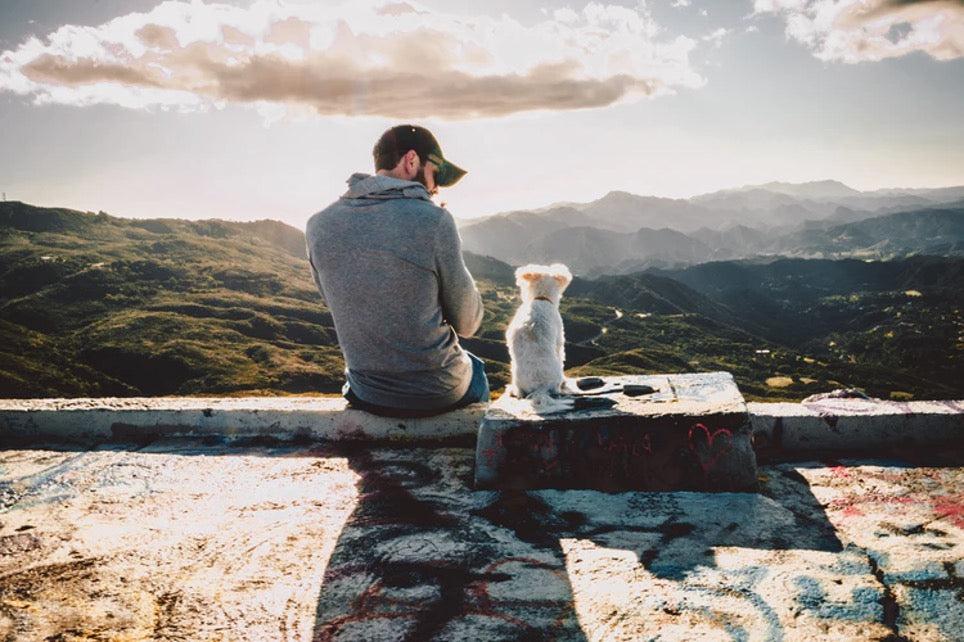Summary: In this blog, we learn how to look after your first dog! If this new furry arrival is your first dog, you’ll need to know the following first time dog owner tips… Welcome to pet parenthood – you’ve adopted a dog! Becoming a parent to a doggo can be the most rewarding experience, […]
Tips For A First Time Dog Owner

Summary: In this blog, we learn how to look after your first dog! If this new furry arrival is your first dog, you’ll need to know the following first time dog owner tips…
Welcome to pet parenthood – you’ve adopted a dog! Becoming a parent to a doggo can be the most rewarding experience, and you’re set to have a loving relationship you’ll cherish for life.
However, if this is your first time owning a dog it can seem daunting and overwhelming as there can be so much to think about!
A dog is a big responsibility, so getting a good head start will make this lifestyle transition easier for both you and your new pooch! They are now utterly dependent on you for a healthy and happy life – so first things first, put some time aside to put everything you need into place and consider the following first time dog owner tips to help you get on your way to being the perfect pet parent.
First Time Dog Owner Tips
Buy the basics
There are some items your dog can’t live without. They are:
- A buckle collar & ID tag
- A harness (provides less strain on their neck if they pull)
- Food bowl
- Water bowl
- Leash
- Toys for play, teething (if a puppy) and amusement
- A comfy dog bed
You also may want to consider investing in these items too, to enhance yours and your pup’s life together:
- A crate
- Grooming products, like shampoo
- Dog treats
- Doggy toothbrush
- Flea and tick preventative treatment
As you and your dog settle into your routine as new best friends, other optional supplies might become a bit more obvious to you.
It’s easy to get wrapped up in buying gear for your pet, but remember that just like children, dogs can grow out of their equipment particularly if you’re bringing home a puppy, so bear this in mind as they grow older.
Register with a vet
Before you bring your dog home, you should research and sign them up to a veterinary practice. You should also book them in for a health check as soon as you can, so they can start getting used to attending the vets and your vet can start to get to know them!
They’ll also need to begin having their routine vaccinations. Vaccines are essential for protecting your dog’s health and life and help prevent incredibly costly future vet bills. Vaccines help protect your dog against canine distemper, canine parvovirus, infectious canine hepatitis, kennel cough, and leptospirosis.
Your vet can also advise on the best regular flea and worming treatment for your dog and guide you on spaying and neutering. Although not essential, spaying and neutering are advised if you’re not hoping to breed as this can reduce problems later on in their life like breast cancer and incontinence in females, and testicular cancer and aggression in males.
Veterinary bills can be expensive so ensuring you have sufficient pet insurance can assist you with costs for healthcare and support with the general well being of your pooch.
It’s advised they see the vet once to twice a year for vaccine boosts, check-ups, and a thorough teeth clean!
Get down with their dental care

Can you imagine not brushing your teeth every day between visits to the dentist? Well, dogs get plaque build-up just like we do, so they also need to have their teeth brushed too!
Be an excellent pet parent and try to brush your dog’s teeth two/three times a week with a dog enzymatic toothpaste and use dental mouthwash every day. Do not use human toothpaste on dogs, as it may contain ingredients that are harmful to their digestion.
The younger your dog, the easier it is to get them used to have their teeth brushed. If you’ve adopted/rescued an older dog, it may be more difficult, but have patience and you will get there! You can start by using an “invisible” finger brush (a transparent brush that sits on the end of your finger), which your dog won’t find so frightening.
Exercise, Food and Diet
Like humans, dogs thrive on routine and need feeding and exercising at similar times and stages every day.
Their diet is really important. A good one helps keep them slim and healthy and makes sure they’re receiving the right nutrients, vitamins, and minerals. Always use a portion of complete, commercial dog food, and if you decide to alter what they’re eating, do it over a slow period of time to avoid any stomach upsets.
Your breeder or dog adoption center should advise you on what they were already eating. If you’re confused, check in with your vet for their advice.
When it comes to exercise, every breed has different needs, and all dogs should be fully vaccinated before they go out on a walk.
Remember, puppies and older dogs need a variant on the above suggestions. For example, puppies need around 5 minutes of exercise per month of their age until they’re fully grown. For example, if they’re three months old they can be walked for 15 minutes a maximum of twice a day. When 4 months old this can go up to 20 minutes twice a day etc.
If you’ve rescued a maturer dog, they will need lower impact exercise and shorter walks. Make sure to discuss their exercise needs with your vet if you’ve adopted an older dog (7+ years old).
Obedience Training

If you’ve got a puppy, you might want to head over to our guide on how to Potty Train Your New Puppy as this will probably be your top priority!
When it comes to obedience, if you’re able, a professional dog training class can be fantastic, particularly if you’re a brand new pet owner!
When choosing a class, make sure that the trainer’s methods are kind, positive, and reward-based. If a class or trainer suggests punishment or utilizing equipment like choke/electric collars avoid at all costs! These classes are cruel and stressful and ultimately an ineffective way of training your dog. These methods just ensure that your dog will become fearful of humans and you. The focus in dog training should be on using praise, food, and play for doing well, not scolding or physical pain.
Unfortunately, there’s not a lot of regulation around dog training centers or trainers, so make sure the trainer is friendly, experienced, qualified, kind, and seems able to handle the number of dogs taking the class at one time.
As an alternative, there are lots of dog charities who offer free training videos online!
Remember that patience is a virtue, and your dog is new to this, just like you! They won’t be intending to misbehave, and the more settled your dog becomes, the better they’ll get at understanding you and exhibiting better behavior.
Interaction
Children:
Never leave a child alone with a dog, particularly if they’re brand new to your family. Communicate and teach your children that your dog is a family member and that they must never scream or run towards them, harass or hurt them, be forceful or aggressive with them, and never encourage play biting.
When a dog is scared or in pain, they will instinctively bite, nip, and/or growl to protect themselves. If you encourage gentle, kind interaction between your children and your dog and are always present, both pup and kid(s) should acclimatize just fine.
Other dogs:
If your dog is fully vaccinated, then they can socialize with other dogs. Mixing them with other pups from a young age benefits their natural development immeasurably!
Get it right from the get-go and make sure when meeting other dogs in the early stages of socializing that they are on their leash so you have better control over the situation if any negative reaction does occur.
Stay focussed and calm and adopt a positive tone so your dog knows they’re in safe hands whilst learning to interact. If there is any hostility between either dog, step away to the neutral ground before trying again and use the command “no” if it was your dog exhibiting the aggressive behavior (growl/bark).
Over time, your pup should become used to being around other dogs and simply say hello to their fellow four-legged friends with a few sniffs!
If your pooch is a rescue and has suffered abuse or been attacked by other dogs in their past, don’t expect too much of them as they will rightly be very scared and anxious. Patience and positive encouragement can help, but if the damage is done it might take a significant amount of time to get them comfortable around dogs again, if ever.
Consider taking time off of work
To help your pooch get settled in, it might be worth having a week or so at home. This way you can get them into a routine, and help build up the period of time they’re left alone. This will help reduce the risk of separation anxiety.
You shouldn’t leave a puppy alone for longer than 2 hours and adult dogs shouldn’t be left for longer than 4-6 hours. If you need to leave them for longer than this, for example, if you work full time, consider hiring a friendly dog sitter to help you care for your new precious pooch!
Happy pet-parenting!
 S
S



